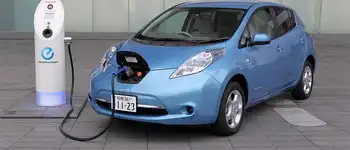South Africa switches on first wind farm
The wind farm will provide only a 100th of the national energy needs – and will not ease the acute electricity shortages afflicting South Africa – but the country's minerals and energy minister called it a first key step.
“It has been a long road to reach this milestone,” said Buyelwa Sonjica as she “switched on” the turbines, eight years after the wind farm was first proposed.
South Africa – sunny and with a long, windy coastline – has enormous potential for renewable energy, experts say. Despite getting more sunshine than Europe, the country has done little to promote solar energy, while wind has the potential to meet at least 9 per cent of its energy needs, Ms. Sonjica said.
But government red tape, environmental planning objections and opposition from state utility Eskom to the arrival of independent power producers had slowed progress.
The four turbines in Darling, a town of 5,000 people surrounded by scrub and sand dunes about an hour from Cape Town, will save an estimated 100,000 tons in coal consumption. They will produce enough energy to satisfy 60 per cent of Darling's energy needs in winter, when there is less wind, and 90 per cent in summer, according to Hermann Oelsner, chief executive of Darling Wind Power.
There are plans to erect an additional 16 turbines to allow the farm to supply energy to other parts of Cape Town.
Danish Ambassador Don Frederiksen, whose country helped fund the $10 million farm in Darling, noted that wind power has helped Denmark's economy expand much faster than energy consumption in recent years.
Wind power currently accounts for about 1 per cent of electricity generation worldwide: Denmark leads the field with 27 per cent of its energy from wind, Spain and Portugal have 9 per cent, and Germany and Ireland 6 per cent, according to figures provided by Ms. Sonjica.
South Africa is dependent on coal-powered stations for more than 90 per cent of its electricity, which has until now been the cheapest in the world. State utility Eskom says the low price has prevented infrastructure development, and applied for a 53 per cent price hike.
Widespread power cuts plunged the country into chaos earlier this year, at one stage forcing the country's all-important gold and platinum mines to close.
“We are in a deep, deep challenge that is going to take some time to come out of,” Eskom chairman Valli Moosa said, the first day of public hearings on the proposed price hike.
The government wants to double generating capacity by 2011, by bringing three mothballed power stations back into production and building two new power stations. It has also asked U.S. and French companies to bid to build a second nuclear power plant.
But it is also fearful of the impact of climate change, with falling crop production, more drought and more flash floods. The Western Cape, the country's wine and fruit producing centre, is expected to become drier and hotter, while the eastern coast near Durban will become much wetter.
Mr. Oelsner said his native Germany, which is the same size as the Western Cape province, has 19,000 wind turbines, compared to South Africa's four. He said South Africa, with its long coastline, has the potential for 70,000 turbines.
“That might sound like a very high figure but when we run out of coal, gas and oil, we will have to work with the sun, the wind and the waves.”
Related News

Joni Ernst calls Trump's wind turbine cancer claim 'ridiculous'
DES MOINES - President Donald Trump may not be a fan of wind turbines, suggesting that the noise they produce may cause cancer, but Iowa's Republican senators are big fans of wind energy.
Sen. Chuck Grassley called Trump's cancer claim "idiotic." On Thursday, Sen. Joni Ernst called the statement "ridiculous."
"I would say it's ridiculous. It's ridiculous," Ernst said, according to WHO-TV.
She likened the claim that wind turbine noise causes cancer to the idea that church bells do the same.
"I have church bells that ring all the time across from my office here in D.C. and I know that noise doesn't give…




